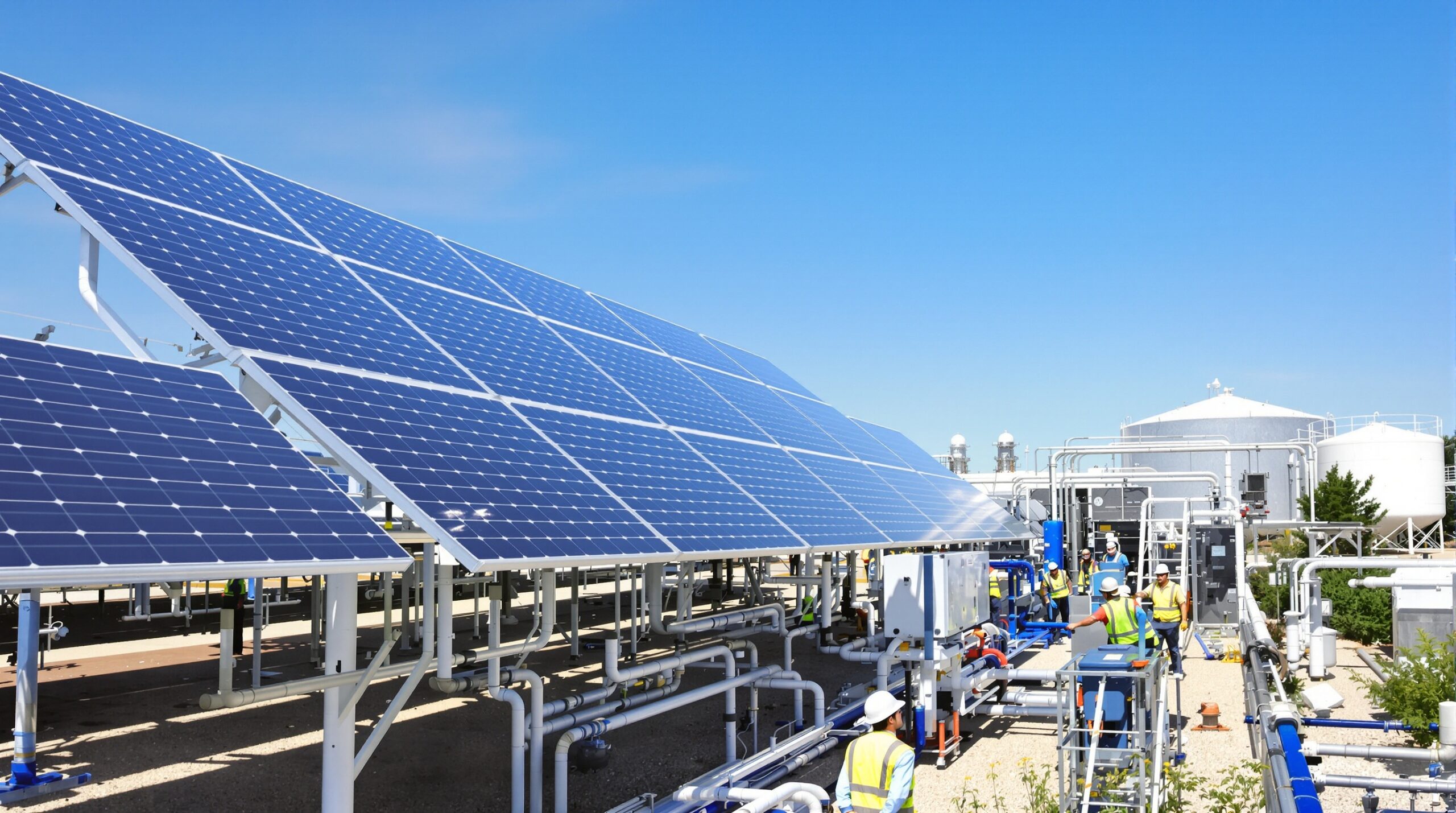Clean water remains a top global priority as population growth and climate change threaten freshwater resources. Access to freshwater is essential for drinking, sanitation, and industrial use. However, water scarcity has driven advances in desalination, a process that removes salt and impurities from seawater and brackish water.
The Major Challenge of Traditional Desalination
Desalination technologies have existed for decades, but traditional systems require enormous amounts of energy. Most operate using fossil fuels, which create both economic and environmental drawbacks. High operational costs limit access to desalinated water in lower-income regions. Additionally, burning fossil fuels for desalination contributes to greenhouse gas emissions, exacerbating global warming.
Thermal processes like Multi-Stage Flash (MSF) and Multi-Effect Distillation (MED) need high temperatures. Reverse Osmosis (RO) plants, now the most common, use electricity to force water through special membranes. Both methods demand continuous energy inputs, which inflate operating budgets and restrain scalability.
Renewable Energy’s Game-Changing Role
Advances in renewable energy have revolutionized the potential for sustainable desalination. Solar, wind, and geothermal energy provide cleaner power at lower costs than ever before. As renewable technology prices fall and reliability improves, integrating these sources into desalination projects becomes increasingly practical.
Many coastal regions facing water scarcity also have abundant renewable resources, making these energy sources especially attractive. Solar energy can be harnessed directly through thermal methods or converted into electricity for RO systems. Wind power can drive pumps or supply direct electrical energy to plants. These energy sources greatly reduce the carbon footprint of desalination while stabilizing electricity costs for operators.
Breakthroughs in Solar-Powered Desalination
Solar-powered desalination stands out as a promising development. Photovoltaic panels now achieve higher efficiencies at lower costs than even a decade ago. Concentrated Solar Power (CSP), where mirrors focus sunlight to produce high temperatures, enables thermal desalination with minimal environmental impact. Hybrid approaches use solar for pre-heating or boosting Reverse Osmosis systems, further decreasing the energy load from other sources.
Recent research has produced solar stills and novel membrane materials that require less energy to operate. Some devices use sunlight to heat water directly, causing evaporation followed by condensation to collect fresh water. These innovations surpass traditional techniques in energy efficiency and simplicity, making them well-suited for remote or resource-constrained communities.
Wind-Powered Desalination Projects
Wind turbines can supply consistent power to coastal desalination plants. Locations with steady ocean breezes, such as islands and shorelines, see particular benefit. Wind-powered RO projects have launched in regions such as the Canary Islands, Denmark, and Australia.
Hybrid wind-solar desalination setups are becoming more common as system flexibility improves. When the wind is strong, turbines generate electricity for the desalination plant. If the weather is calm, solar panels or stored energy can take over. This reduces downtimes, maximizes output, and keeps water available even when one energy source drops.
Technological Innovations in Desalination Processes
Alongside renewable power integration, desalination equipment itself has improved. Next-generation membranes use advanced polymers and nanomaterials to filter salt and contaminants with enhanced selectivity and energy efficiency. These allow for higher water recovery rates and reduce the amount of pressure—and thus energy—needed to force water through the system.
Emerging processes such as forward osmosis, membrane distillation, and capacitive deionization promise even lower energy demands. These methods exploit new physical phenomena or harness electrical properties to purify water, making them compatible with variable renewable energy sources. Automation and smart controls now optimize energy use and water yield based on real-time resource availability.
Case Studies Around the World
The Middle East and North Africa are pioneering large-scale solar and wind-powered desalination plants. In Saudi Arabia, solar energy powers advanced RO systems to provide affordable water to remote communities with minimal carbon emissions. Morocco’s Noor Ouarzazate complex integrates solar energy for both electricity generation and water purification, supporting agriculture and local economies.
Australia faces frequent droughts and is rapidly expanding wind and solar desalination to supply its growing cities. A wind-powered RO plant in Perth produces millions of liters of drinking water daily, greatly reducing the region’s reliance on rainfall and fossil fuels. In the Caribbean, several islands deploy small-scale hybrid renewable desalination units, improving water security for disaster-prone regions.
Economic Benefits of Renewable-Driven Desalination
Affordable and reliable electricity is crucial for water utilities worldwide. Renewable energy’s plummeting prices have lowered desalinated water costs to below $0.50 per cubic meter in some projects. For comparison, early desalination operations could cost several dollars per cubic meter, putting water out of reach for many communities.
Local renewable resources reduce exposure to fossil fuel price fluctuations and cut transportation costs for energy. Directly localized production enhances resilience against supply chain shocks or geopolitical instability. Governments and private enterprises are increasingly willing to invest in renewable-powered water plants as their long-term financial outlook improves.
Environmental Gains Build Global Support
Transitioning to renewables curbs the carbon footprint of desalination technology. This aligns with international climate commitments and sustainable development goals. Renewable-powered desalination dramatically reduces emissions compared to traditional approaches, helping safeguard ecosystems and coastal communities.
Breakthroughs in brine management and zero-liquid-discharge systems make renewable desalination more environmentally friendly. Some projects now recover minerals or salts from the brine, further offsetting costs and minimizing pollution. Smarter desalination supports both water security and planetary health.
Future Outlook: Toward Universal Access
With continued research and investment, clean water from renewable-powered desalination may soon become available almost anywhere. Expanding pilot projects, scaling up best practices, and lowering initial capital costs will accelerate global adoption. Collaboration among governments, industry, and research institutions is crucial for sharing knowledge and improving design.
Positive outcomes in global pilot sites provide hope. Slashing water costs and offering energy independence has a meaningful impact on small islands and arid nations. As these successful breakthroughs spread, desalination powered by renewable energy promises to redefine sustainable water supply for generations.

